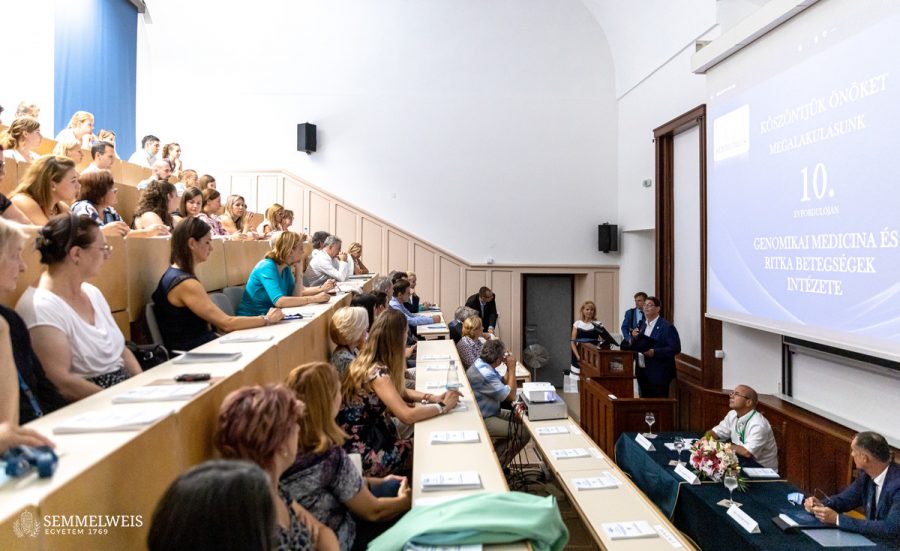The Institute of Genomic Medicine and Rare Diseases of Semmelweis University celebrated its 10th anniversary and is the first center in Hungary to provide a full range of healthcare for rare genetic diseases. The event was organized by Dr. It was inaugurated by University President Bella Merkley, then Dr. Andras Matulsi, Vice Dean for Strategy and Development at the College of General Medicine, then Dr. Greetings from Attila Szabo from the University’s Clinical Vice Chancellor. The staff of the institute celebrated the jubilee with professional lectures. Director, Dr. Judith Maria Molnar emphasized: Since it became an independent institution, the outpatient movement has continually increased, as has the scope for genetic diagnosis.
Dr. said. Bella Markle. The rector emphasized that genetics is one of the fastest growing and most important research areas, which is fundamentally changing the approach to medicine. “We can be proud of the fact that our university was the first nationally to recognize that rare diseases should also be treated in a comprehensive care facility and that the network is essential to their multidisciplinary care,” he noted, adding that since 2015, the institute has become a national center for disease experts. Rare, and two years ago the European Institute became the national node of the reference network and participates as a founding member of the local node of the largest biobank network in Europe. He emphasized that by teaching the subject of Clinical Genetics – which was initiated by the Institute – the future generation of physicians is provided with modern and timeless knowledge.
International cooperation, a multidisciplinary team, synergies between specialized fields, personalized medicine, the use of artificial intelligence, advances in bioinformatics, data-driven medicine – these are all forward-looking solutions found at the Institute that bring Semmelweis University closer to the goal of being among the top 100 institutions For higher education in the world and among the top 5 medical universities in Europe – included in the Rector’s List.


In the first ten years of its existence, the Institute of Genomic Medicine and Rare Diseases has proven every day to be a worthy custodian of the intellectual heritage of Phystetics, carrying the home of discovery of its great predecessor in all the elements of education, research and community life that take place at the Institute.
He said.

Thus, we became the first local center to provide a full range of healthcare for rare genetic diseases.”
He said. He noted that the pandemic affected them too, in May 2021, the department was converted into a place to provide care for COVID for a period of one month. He presented the private laboratories and clinics operating at the institute, stressing that in the past ten years it has received nearly 1 billion HUF to support it, in the form of 21 different research applications. He briefly described the research currently being conducted at the institute, talked about future plans and development directions, and highlighted the importance of prevention and the fact that they want to become important players in data-driven healthcare in the field of rare diseases.
The staff of the institute celebrated the tenth anniversary of the establishment of the institute in the framework of a professional presentation. Dr. Attila Batosh presented the present and future of genomics. About the situation of people with rare diseases locally and internationally, Dr. Gabor Boghani gave a lecture. Through the eyes of a young clinical researcher, Dr. On the clinical implementation of genomic research. Peter Palicza and Dr. Andras Vallos gave a video presentation from Biobanks to Patient Care, Dr. Györg Pfliegler introduced the integration of local rare disease care into European reference networks.
Bernadette Body
Photo: Attila Kovacs – Semmelweis University
The article was published by the Directorate of Communications at Semmelweis University.













































